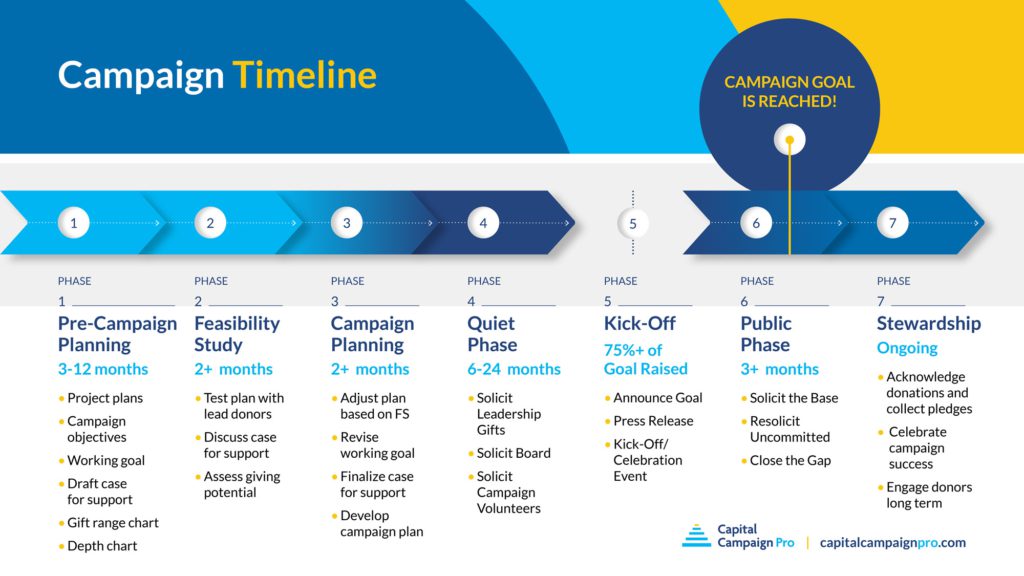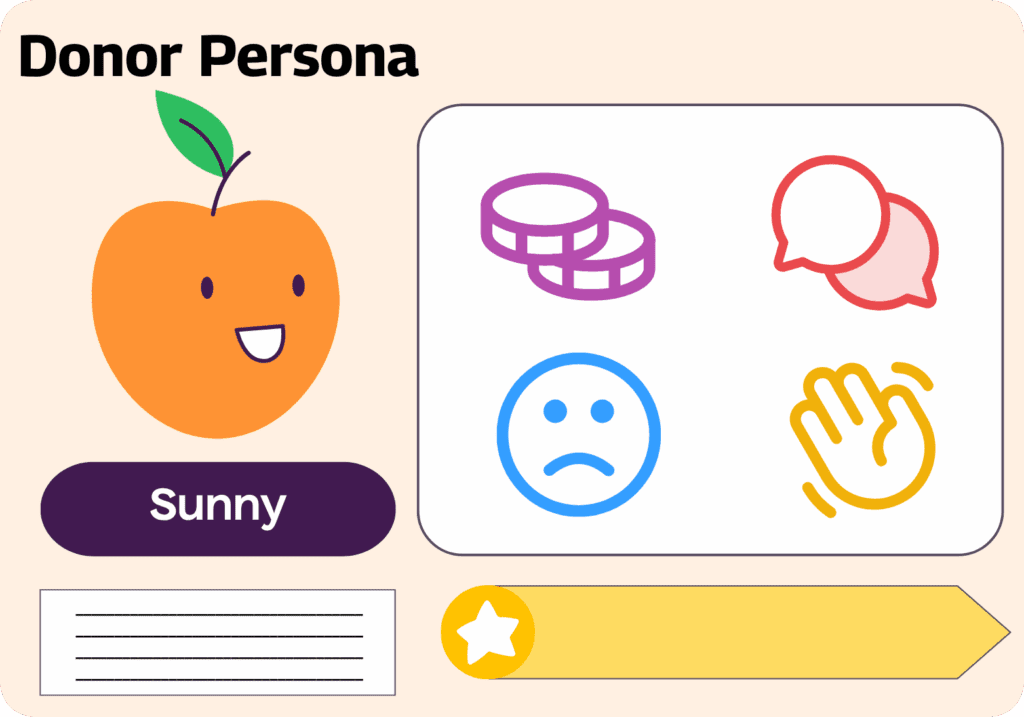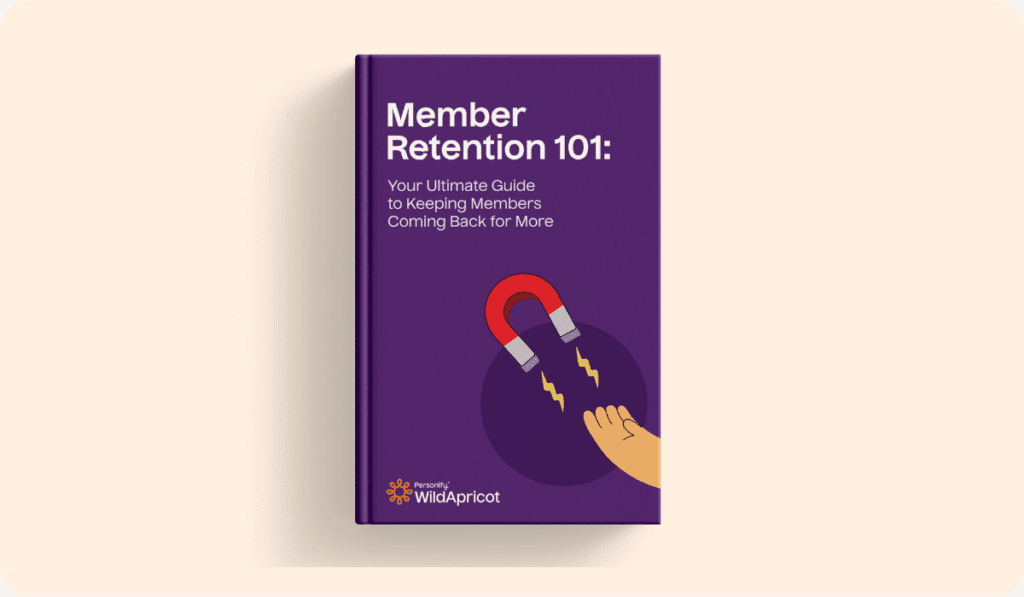If you’re conducting, planning or even just considering a capital campaign for your nonprofit, you’ve likely got a lot on your mind.
One extremely common concern is that donors won’t give smaller amounts towards your annual appeals if you ask for big campaign gifts. Maybe you’re already having nightmares about raising $10 million for a new building only to watch your year-end goals fall apart.
These concerns make sense! After all, how will a major donor feel if after giving $100,000 to your capital campaign, you go back and ask them to renew their $2,500 annual gift? You value their support, but you don’t want to feel like a burden.
But when you unpack what’s really going on for the donor and the organization, you’ll learn that your worries are likely unfounded.
In fact, in our experience with organizations that have been through capital campaigns, annual fundraising tends to increase during those periods rather than decrease. Why?
What are Capital Campaigns
A capital campaign is a targeted fundraising effort by a nonprofit organization to raise significant amounts of money within a specified period. These campaigns are usually conducted to finance major initiatives such as building projects, endowment funds, or significant equipment purchases.
Unlike annual fundraising, which supports ongoing operations, capital campaigns focus on securing large gifts from donors and often involve extensive planning, marketing, and volunteer involvement.
What do these campaigns accomplish?
Capital campaigns are designed to raise funds for new investments that will increase the organization’s capacity, or its ability to pursue its mission and grow sustainably. Without an influx of capital and energy, it can be difficult for nonprofits to significantly grow beyond their normal cycles of annual fundraising that cover operating expenses but little else.
The capital investments funded by these campaigns can take different forms, including:
- New buildings or renovations
- Land purchases
- Equipment purchases or upgrades
- Endowment or scholarship funding
- Startup funds for new programs and services
- Hiring new staff members
Capital campaigns are often designed to fund one major objective, but they can come in all shapes and sizes depending on the organization and its goals. Mini-campaigns and capacity campaigns focused on bundled sets of capacity-building investments are increasingly popular options that give nonprofits added flexibility.
Regardless of the scale or specific objectives of a campaign, it will follow these general stages:

- Pre-planning. The initial shape of the campaign is sketched out, including its objectives, working goal and case for support.
- Feasibility study. The nonprofit tests its initial plans by interviewing key stakeholders whose involvement will be essential for later success.
- Campaign planning. Based on interview feedback, the plans are refined and expanded, and prospective major donors are researched.
- Quiet phase. The nonprofit discusses the campaign with its most impactful donors and solicits the lead gifts that make up the bulk of the total goal (roughly 75% or more).
- Kick-off. The campaign and the upcoming projects it will fund are announced publicly.
- Public phase. The nonprofit widely promotes the campaign, hosts events and solicits smaller gifts from the broader community.
- Stewardship. Everyone is thanked, donor relationships are strengthened, pledged gifts are collected and work on the funded projects can begin.
This campaign model brings many benefits. It allows nonprofits to carefully plan and test their strategies before heavily committing to them. It also lets them devote plenty of time and attention to the most important and impactful gifts, and it ensures the project won’t get announced too soon.
By using and adapting this model, any organization can raise more than it ever has before.
The Relationship Between Capital Campaigns and Annual Fundraising
As you learn more about capital campaigns, you may wonder—won’t asking for such large, special gifts from the same donors whose annual donations you rely on jeopardize your operating budget for as long as the capital campaign runs? We say no.
Here are four points that help explain why:
Point 1: People who give generous gifts to your capital campaign care about your cause.
Donors invest in your organization to help you accomplish your mission.
Capital campaign donors want to help you build a new facility or upgrade your current building. Why? Because it will help your organization expand and improve its service! These generous donors care about the kids you serve, the animals you protect, or the families whose lives you improve.
Donors who give large gifts to your campaign want to make sure your operating budget is sound. So, of course they’ll continue to support your operations through annual giving!
Point 2: For many donors, recurring and campaign gifts are different.
Many donors are in the habit of giving annually to your organization. Maybe they give $25, $500—or even $5,000 or more a year. They might increase that amount over time, but annual gifts tend to be a quite stable part of your revenue streams.
But just because a donor gives you $5,000/year, year after year, doesn’t mean that gift is the donor’s total giving capacity.
Donors who give consistently every year calibrate their giving with the intention that that gift will be recurring. They already expect to give at that level year after year! These recurring gifts come out of readily available funds—we can think of those as “checkbook gifts.” For the donor, they may seem more like household expenses than extraordinary acts of generosity.
Capital campaign asks are different: they’re out of the ordinary. A one-and-done gift that can help your organization move to the next level makes the impact of their annual giving even greater.
Because these gifts are different, so is the donor decision process. They might give those gifts from assets rather than cash. And they may have to involve other people in the decision process.
Large gifts might involve more conversations with people in your organization, too. A donor could want to learn more about your plans and case for support by speaking with your Executive Director—or maybe the donor will want more information on your organization’s finances.
But many donors who give annually at low levels can make larger gifts if you ask for them. And, they can make them in addition to the regular gifts they are already giving.
Point 3: Transparent donor conversations = campaign + annual gifts.
Do you feel like asking for capital gifts on top of annual fund gifts is like springing a second ask on top of a first? You’re not wrong.
In a campaign year, as you head into your annual fund season, you should segment your list. Separate out the donors you know you will be asking for capital campaign gifts in the same period. That way, you can treat them differently so they know you’ll be asking for two gifts.
There are two ways to go about this:
- Ask for both gifts at once when you ask for the campaign gift.
- Let the donor know during the campaign solicitation that they will be getting their regular annual fund solicitation a bit later in the year and communicate the importance of their ongoing support.
One simple way to keep this straight is the “Double Mention, Double Ask” approach: During a campaign period, mention the campaign in your annual fund ask and mention the annual fund during the campaign ask.
If a donor says that they are only able to make one gift, let them know that your annual funding is of primary importance. By highlighting the importance of annual fundraising, you ensure that your campaign won’t undermine that all-important financial life-stream for your organization.
Point 4: Capital campaigns boost all fundraising.
Finally, and perhaps most importantly, don’t underestimate the power of the capital campaign! It can breathe new life into your organization and revitalize your donor relationships. Here are a few reasons why:
- During the early stages of the campaign, you will involve many community leaders and donors in the planning process to receive their input and generate buy-in. This will help strengthen your relationships and encourage key supporters to feel truly invested in your mission even beyond this particular campaign.
- You will ramp up your donor communications as the quiet phase progresses by creating a solid case for support, donor discussion guides and customized solicitation plans. Through this process, you and your team will get invaluable experience and will become far more effective in asking for gifts in one-on-one settings.
- You may also make capacity investments to prepare for the campaign, like adding to your development staff and upgrading your fundraising systems. These improvements can carry long-term benefits for your fundraising efforts over time.
- You may revamp your branding and put more energy into expanding your profile and visibility in your community, both of which will benefit your organization over time even beyond the results of the campaign itself.
Capital campaigns are big investments of your time and resources. As such, many organizations take them as the perfect opportunity to make a range of capacity-building investments that they’ve been putting off. Plus, a campaign’s intense focus on relationship-building will strengthen bonds with stakeholders while giving your team plenty of hands-on experience in cultivation and solicitation strategies.
Taken together, the increased investments and the energy infused into your organization during the campaign period are likely to boost the results of your entire fundraising program over time.
Will your capital campaign undermine your annual fundraising?
The answer is a resounding no. To recap:
- Your major donors care deeply about your mission and are invested in your success.
- Major donors tend to think of their annual and campaign gifts differently, as yearly recurring expenses vs. special one-time contributions for a uniquely important purpose.
- You can easily adapt your solicitation strategies to be transparent with donors and reassure them of the immense value of their annual gifts.
- The investments made and relationships built during a capital campaign can significantly grow your organization’s capacity beyond the immediate impact of the campaign itself.
Capital campaigns are exciting undertakings for everyone involved, donors included.
We find that they tend to increase rather than decrease overall giving to an organization by generating energy and urgency in the community. Capital campaign fundraising can certainly be intimidating, but it’s also an incredible opportunity for nonprofits ready to make the leap.
Capital Campaign Readiness Assessment
Is your organization ready for a capital campaign? This simple assessment tool will help you find out. You’ll assess six key areas of your organization. Take this free assessment now and find out if you’re truly ready for a campaign.
Amy Eisenstein, ACFRE, and Andrea Kihlstedt are co-founders of Capital Campaign Pro, a virtual support system for nonprofit leaders running successful campaigns. Their process provides all the tools, templates, and guidance you need — without breaking the bank.









